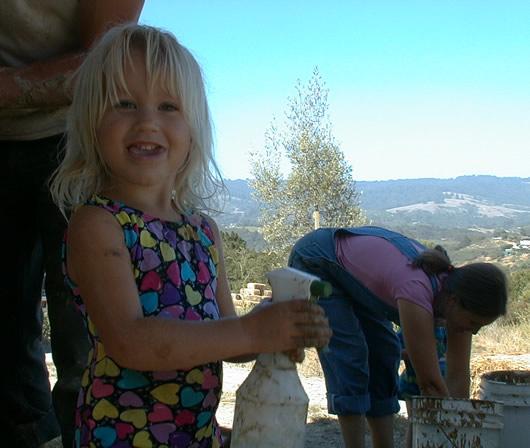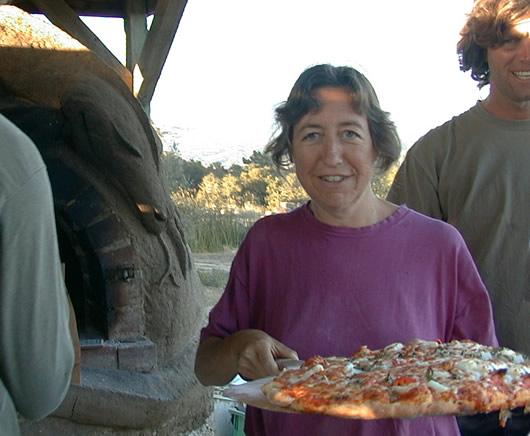(as reported in our newsletter, July 2001)
No Loafing Around: A great crew gathered this past weekend, and now there’s a fabulous wood-fired bread oven on the farm, made by many hands out of natural materials. It’s almost done — it just needs a little time to dry out and cure, and then get ready for some great breads and pizza!
How will it work? You build a fire in the oven, to heat it up. Then you scoop the fire out and put your bread inside, and close the door. The oven’s innermost layer holds the heat and humidity at the perfect levels for baking (and there’s a smoky twang too!).
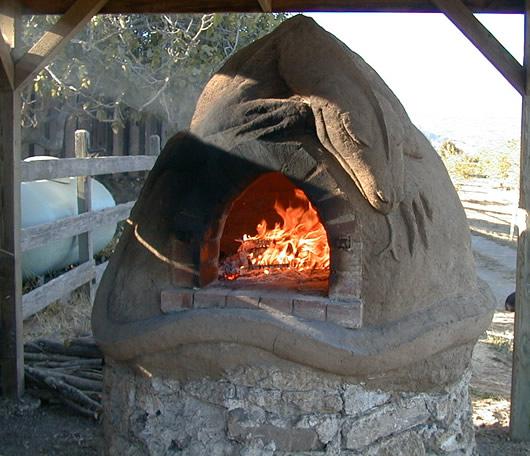
Step 1: The Pedestal, Door and Form
When the crew arrived Saturday morning, they found a pedestal for the oven all ready, built out of “urbanite” (concrete debris) by our guide Charles and Tom’s nephews from Germany. Charles had also formed an arched door and a baking floor out of brick. The crew molded the oven’s inside space out of sand…

Step 2: The Innermost Thermal Layer
The crew mixed natural clay and sand to form the inside thermal shell of the oven, and packed it over the sand mold, about 3 inches thick or so. ; then they took handfuls of rice straw, soaked them in clay slurry, and covered the inside shell with a thick insulating layer. Then, on the next day, the crew used “peanut butter” (an adobe composed of clay, sand, and aged manure from Peanut, the farm pony) to top the straw layer with a protective shell, and added a decorative lizardy creature to be the oven’s happy guardian.

Step 3: The Insulating Layer
Then the crew took handfuls of rice straw, soaked them in clay slurry, and covered the inside shell with a thick insulating layer.
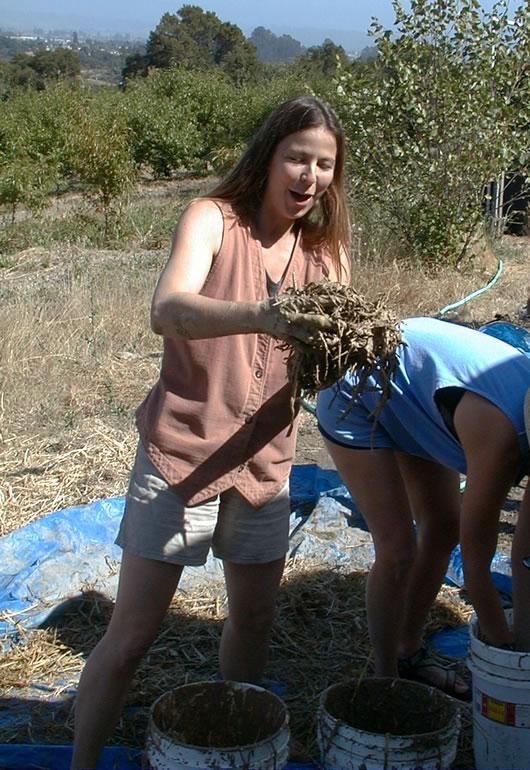
End of Day: The Insulating Layer is On!
The insulating layer is 4 inches thick or more; it serves to keep the heat inside the oven.

Step 4: The Topcoat of Cob (Adobe)
On the next day, the crew made “peanut butter” (an adobe composed of clay, sand, and aged manure from Peanut, the farm pony)…
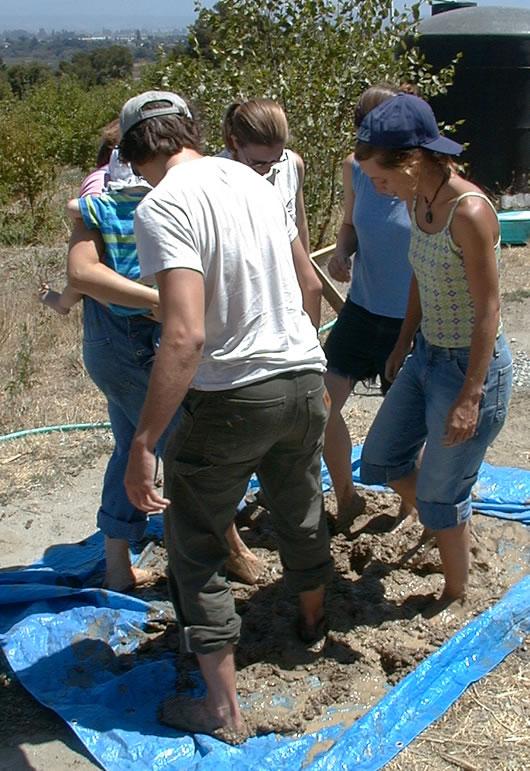
Step 5: Finishing and Decorating
The crew used the “peanut butter” to top the straw layer with a protective cob shell, and added a decorative lizardy creature to be the oven’s happy guardian.
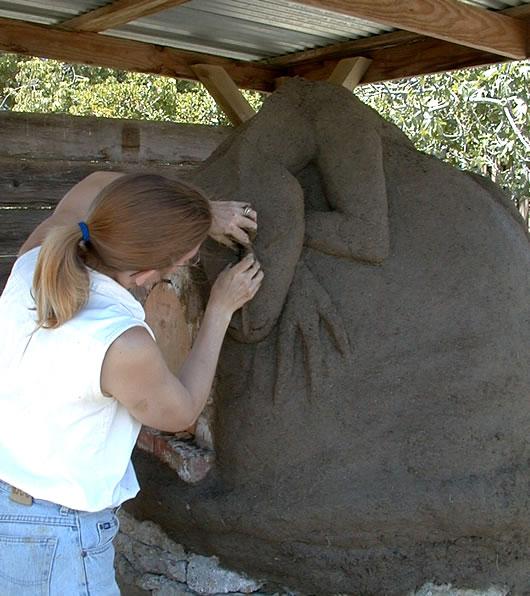
If you were there, then you remember digging sand out of the old paddock, and clay out of the hillside, and pushing the cart to fetch manure and straw. And measuring out shovelfuls onto an old tarp, and adding water, and people rushing in to dance this mess around. Then everyone scooping up handfuls, and squishing it among their fingers, and loving the feel of it. And people and kids scooping the mix into buckets, and scooping it out again onto the oven’s sides and top, and gently patting it into place, and running their hands to make it as smooth as Buddha’s belly. And people laughing and talking, kids running here and there, dogs barking, and the joyful fulfillment of the work of hands.
